Home > Company > Tire Safety > Choosing Tires > Determining Tire Size
Once you have determined it’s time to buy tires, you’ll need to know what size tires are correct for your vehicle. Depending on what you drive, you may be interested in how to find the right tire for your…
This information is usually inside your car’s doorjamb, in your owner’s manual. To ensure your current tire or a replacement tire you may be looking at matches your vehicle’s requirements, it will be good for you to understand how tire sizing works. You may have never paid attention to the string of numbers and letters on every tire, but it’s a gold mine of information.
If you’re unsure of how to read tire measurements from your tire walls, the information and graphics below will tell you how to read tire size, understand and interpret it. If you decide you want to substitute a new size or tire type, consult an authorized tire retailer who can expertly advise you, because many optional tire sizes may have different load capacities and could require wheels of a different rim width or diameter and different inflation pressure.
Not sure you need new tires? Our Tire Replacement Guidance article will help you determine whether it’s time to retire your tires.
Most passenger cars, SUVs and light pickups (1/2 ton and smaller) will come with tires that are either P-Metric or Euro-Metric. For P-Metric tires, you’ll see the letter “P” before the number sequence begins: P225/70R16 97H. P-metric is a designation standardized by the Tire and Rim Association for a “passenger car” tire type. For Euro-Metric there will be no preceding letter before the number sequence begins: 225/70R16 98H. Euro-Metric is a designation standardized by the European Tyre and Rim Technical Organization for a “passenger car” tire type.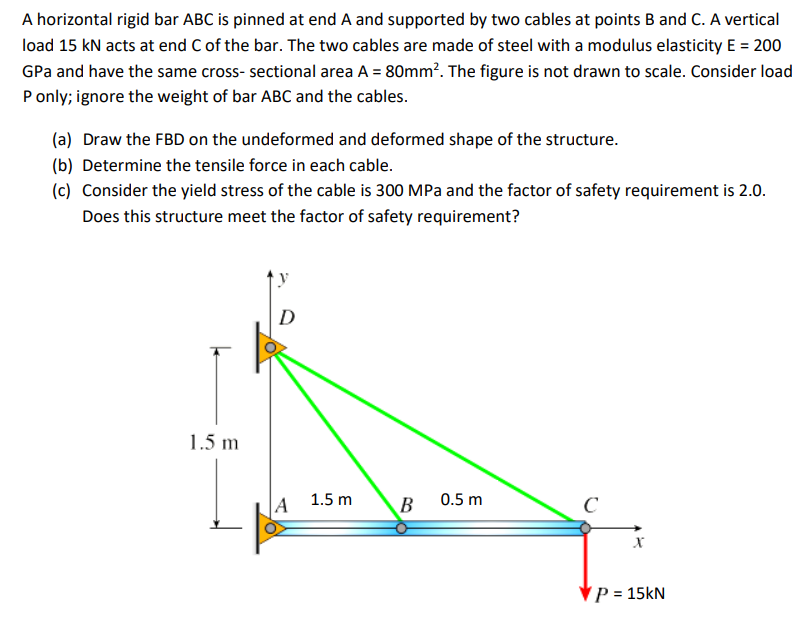 Both P-Metric and Euro-Metric size tires are designed to primarily be used on passenger vehicles, which can include cars, minivans, SUVs, and other light duty pickup trucks.
Both P-Metric and Euro-Metric size tires are designed to primarily be used on passenger vehicles, which can include cars, minivans, SUVs, and other light duty pickup trucks.
If your vehicle is an SUV, Pickup truck or van, you might see a different type of size designation on your placard that is specific for heavy duty light trucks and vans, especially common on ¾ ton and larger pickup trucks and vans. There are two common size types in this category, LT-Metric and Euro-Metric Commercial (aka C-type). Both size types are metric and so use the same structure as P-Metric and Euro-Metric but have some different characters in the size that differentiate them from their passenger car cousins. LT-Metric tires will have the letters “LT” before the size number sequence: LT245/75R17 119/116R Load Range E. Notice that there are two load index numbers and a Load Range, see the section on Load Index for more info. LT-Metric is a designation standardized by the Tire and Rim Association for a “light truck” type tire. Euro-Metric Commercial or C-Type tires will look very similar to a passenger Euro-Metric size except that there will be a “C” right after the rim size: 23/65R16C 121/119R. Notice that the C-type tires also have two load index numbers. Euro-Metric Commercial, or C-Type is a designation standardized by the European Tyre and Rim Technical Organization for a light truck type tire. Light truck tires are designed to be used on vehicles capable of carrying heavy cargo and are usually only specified by a vehicle manufacturer on vehicles exceeding a certain load capacity.
Euro-Metric Commercial or C-Type tires will look very similar to a passenger Euro-Metric size except that there will be a “C” right after the rim size: 23/65R16C 121/119R. Notice that the C-type tires also have two load index numbers. Euro-Metric Commercial, or C-Type is a designation standardized by the European Tyre and Rim Technical Organization for a light truck type tire. Light truck tires are designed to be used on vehicles capable of carrying heavy cargo and are usually only specified by a vehicle manufacturer on vehicles exceeding a certain load capacity.
Other types of tires that fall into the Metric sizing type are Temporary Spares, they start with “T”. If you see a size that starts with “ST,” that means “special trailer” and is only for use on a trailer.
Regardless of whether you are looking at a P-Metric, Euro-Metric, LT-Metric, Euro-Metric Commercial, T or ST tire the numbers in the size mean the same thing.
The first number to appear in your tire size information is the width, in millimeters, of the correct tires for your vehicle: P225/70R16 91S.
Tire width always refers to the measurement from one sidewall to another. Thus, a tire with the measurement “P225” is for a passenger vehicle and has a nominal width of 225 millimeters.
After the slash mark, the next number you see is for the tire’s aspect ratio, which essentially tells you how tall your tire’s profile is: P225/70R16 91S. Aspect ratios are delivered in percentages. Tire makers calculate the aspect ratio by dividing a tire’s height off the rim by its width. If a tire has an aspect ratio of 70, it means the tire’s height is 70% of its width.
Lower aspect ratio tires, such as a 60 series, generally offer vehicle handling performance advantages over higher aspect ratio tires, such as a 75 series, but a typical trade off can be ride harshness.
After the aspect ratio comes a letter that indicates the type of internal construction maintaining your tire’s stability: P225/70R16 91S.
There are two types of construction that you may see on the sidewall of a tire:
Radial tires are the most common tires on the road in the United States today; thus “R” will usually be shown in the tire size designation. Radial construction means the tire’s internal ply cords are oriented in a radial direction, from one bead over to the other, essentially perpendicular to the direction of rotation. You may also occasionally see RF indicating a run flat tire or ZR indicating a tire that is a speed rating higher than V.
The next number is the diameter code, in inches, of the rim onto which the tire can be mounted. For example, a tire with the P225/70R16 91S would fit a rim with a 16-inch diameter.
Load index can be a confusing subject because there are so many different caveats, but we will try to explain everything here.
The next figure after the rim size in the sequence is your tire’s load index, which tells us how much weight, in pounds, the tire can support when fully inflated: P225/70R16 91S
We call it the load “index” because the number doesn’t tell us the precise number of pounds the tire can carry, at least not by itself. However, the number does correspond to a specific load capacity listed in an index. Beginning with 1 and ending with 150, numbers in the load index represent carrying capacities of 99 to 7385 lbs.
There are two types of load types for passenger tires though, Standard Load and Extra Load. If a tire is Standard Load there will be no markings indicating it but if it is Extra Load the letters XL will appear after the size and load index.
Standard Load Euro-Metric: 215/55R17 94V
Extra Load Euro-Metric: 215/55R17 98V XL
Passenger car tires like P-Metric and Euro-Metric will only have one load index number where LT-Metric and Euro-Metric Commercial (C-Type) will have two numbers separated by a slash. The first number is the load index if the tire is used in a single application, the second number is the load index if the tire is used in a dual application. Passenger type tires cannot be used in a dual application. Light truck tires will also have a Load Range that is indicated by a letter, such as Load Range E. Load Range is an older term that is still commonly used in the industry so you may hear your tire dealer reference it but the load index numbers are the best way to ensure you have the proper tire.
The first number is the load index if the tire is used in a single application, the second number is the load index if the tire is used in a dual application. Passenger type tires cannot be used in a dual application. Light truck tires will also have a Load Range that is indicated by a letter, such as Load Range E. Load Range is an older term that is still commonly used in the industry so you may hear your tire dealer reference it but the load index numbers are the best way to ensure you have the proper tire.
One important but often misunderstood facet about load index is that the load index numbers between standards organizations (P-Metric vs Euro-Metric) are not necessarily on the same scale. Meaning that two tires in the two different systems that have the same load index number could have different maximum load capacities. This is why it’s important to not only look at the load index number but also verify the actual load capacity.
The final figure in a tire size sequence is the speed rating, which is indicated by a letter: P225/70R16 91S. Just as your load index number corresponds to a specific load, your speed rating letter corresponds to a particular speed capability based on a standardized laboratory test.
Just as your load index number corresponds to a specific load, your speed rating letter corresponds to a particular speed capability based on a standardized laboratory test.
For example, a tire with speed rating “S” is rated for up to 112 mph, while a tire rated “R” is up to 106 mph. Remember that this isn’t a recommended cruising speed. Of course, you should always follow legal speed limits on roadways.
Replacement tires must have the same or higher speed rating as the vehicle’s Original Equipment to maintain vehicle speed capability. If a vehicle has tires with different speed ratings, it is the speed rating of the “slowest” tire that dictates the vehicle top speed.
There is one last sizing type that you should know about, especially if you are in the market for off road tires for a light truck or SUV. It’s called a Flotation size and the numbers in this sizing format are very different from the Metric formats.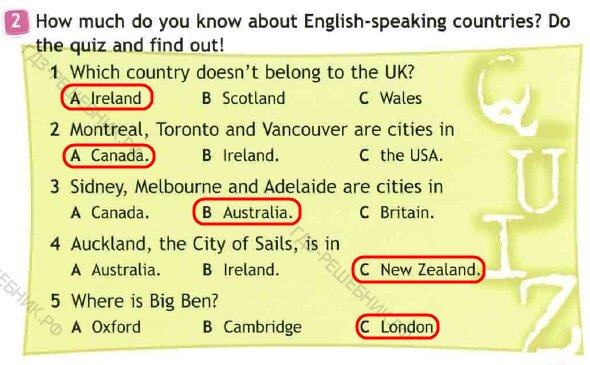 Flotation sized tires are similar to LT-Metric tires in application except for a few important points. Number one, they cannot be used in dual applications and number two, an equivalent size tire may have different load capacity than its LT-Metric counterpart.
Flotation sized tires are similar to LT-Metric tires in application except for a few important points. Number one, they cannot be used in dual applications and number two, an equivalent size tire may have different load capacity than its LT-Metric counterpart.
The first number in the Flotation tire size is the overall diameter in inches. Pretty straight forward.
The second number is the section width (sidewall to sidewall) measurement in inches. Again, fairly simple.
After the section width comes a letter that indicates the type of internal construction: 33X12.50R17LT 120Q.
This is the same as is found in the metric sizing systems.
There are two types of construction that you may see on the sidewall of a tire:
Radial tires are the most common tires on the road in the United States today; thus “R” will usually be shown in the tire size designation. Radial construction means the tire’s internal ply cords are oriented in a radial direction, from one bead over to the other, essentially perpendicular to the direction of rotation.
Radial construction means the tire’s internal ply cords are oriented in a radial direction, from one bead over to the other, essentially perpendicular to the direction of rotation.
The next number is the diameter code, in inches, of the rim onto which the tire can be mounted. For example, a tire with the 33X12.50R17LT 120Q would fit a rim with a 17-inch diameter.
The letters LT will be after the Rim Diameter indicating that this tire type is intended for Light Truck vehicles similar to the LT-Metric and Euro-Metric Commercial (C-Type) tires.
Load Index and Speed Rating have the same meaning and format as the tires using the metric sizing system. Note that since flotation tires cannot be used in a dual application there will be only one load index number instead of two.
Another group of stamping on certain types of tires is the Uniform Tire Quality Grading or UTQG. This grading and stamping is required for passenger car tires (i.e. P-metric and Euro-metric) in the all season and summer categories. Dedicated winter tires, Light Truck (LT-Metric, Euro-Metric Commercial, Flotation) and Motorcycle tires are excluded from this requirement.
Quality grading is designed to make the tire purchase decision easier for you. Ideally, the system is intended to provide simple, comparative data so you can make an intelligent buying decision. However, the ratings are based upon test results achieved under special conditions. This means it’s possible to misinterpret the comparative data as it relates to your individual driving habits, conditions, etc. You should still rely on your service or tire professional for assistance.
Quality grading designates the comparative performance levels of a tire based on government-specified tests but commissioned by the individual tire manufacturers.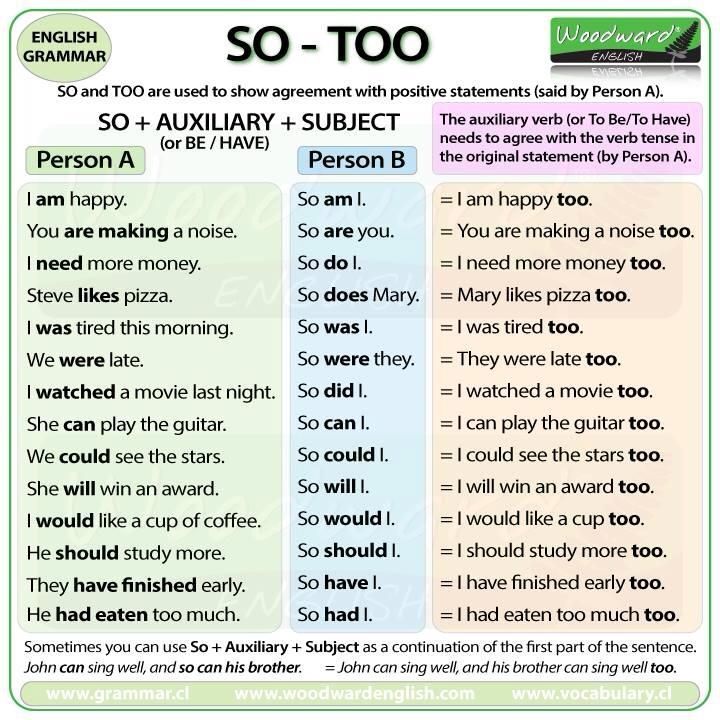 All tire manufacturers are required to grade regular and all-season passenger tires in three categories:
All tire manufacturers are required to grade regular and all-season passenger tires in three categories:
UTQG
Treadwear
The treadwear grade is a comparative rating based on the wear rate of the tire when tested under controlled conditions on a specified government test course for 6,000 miles (9,600 km). For example, a tire graded 150 would wear one and a half times as well on the government course as a tire graded 100. However actual tire performance depends on driving habits, road characteristics, service practices, and other factors that can influence the outcome.
Traction Grades AA, A, B and C
The traction grades from highest to lowest are AA (the highest), A, B and C. They represent how well tires stop on wet pavement as measured under controlled conditions on specified government test surfaces of asphalt and concrete. C-rated tires will have the lowest traction performance.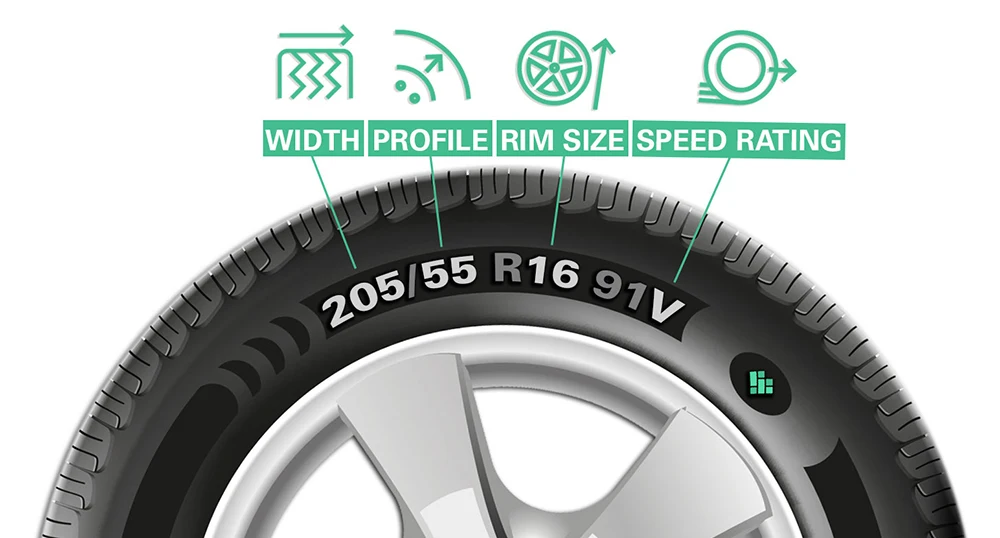
WARNING: THE TRACTION GRADE ASSIGNED IS BASED ON A WET BRAKING (STRAIGHT AHEAD) TRACTION TEST AND DOES NOT INCLUDE CORNERING (TURNING) TRACTION.
Temperature Grades A, B and C
The temperature grades A, B, and C represent the tire's resistance to the generation of heat and its ability to dissipate heat when tested under controlled conditions on a specified indoor laboratory test wheel. Sustained high temperature can cause the tire’s material to degenerate and reduce tire life, and excessive temperature can lead to sudden tire failure. The grade C corresponds to a performance level all passenger car tires must meet under the Federal Motor Vehicle Safety Standard No. 109. Grades A and B represent higher levels of performance on the laboratory test wheel than the minimum required by law.
WARNING: THE TEMPERATURE GRADE IS ESTABLISHED FOR A TIRE THAT IS PROPERLY INFLATED AND NOT OVERLOADED. EXCESSIVE SPEED, UNDER INFLATION, OR EXCESSIVE LOADING, EITHER SEPARATELY OR IN COMBINATION, CAN CAUSE HEAT BUILDUP AND POSSIBLE TIRE FAILURE.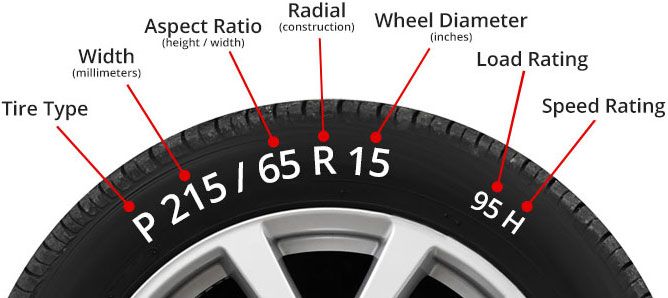
DOT Quality Grades
All passenger car tires must conform to other federal requirements in addition to these grades.
Learn about our mission, our achievements, and our ongoing commitments
Read Our Origin Story
Pickup trucks and SUVs are available in different load carrying capacities. Compact pickups often feature 1/4 ton (226 kg) capacity while full-size pickups feature 1/2 (453 kg), 3/4 (680 kg) and 1 ton (907 kg) capacities. Full size SUVs are often available in similar load capacities. It is easier to "overload" a pickup truck than a passenger car, so tires on pickups and SUVs are more likely to experience additional stress. experience additional stress.
Switching from P-Metric/Euro-Metric to LT-Metric/Flotation
Many pickups and SUVs (especially compact and ½ ton) will come with P-Metric or Euro-metric tires as original equipment.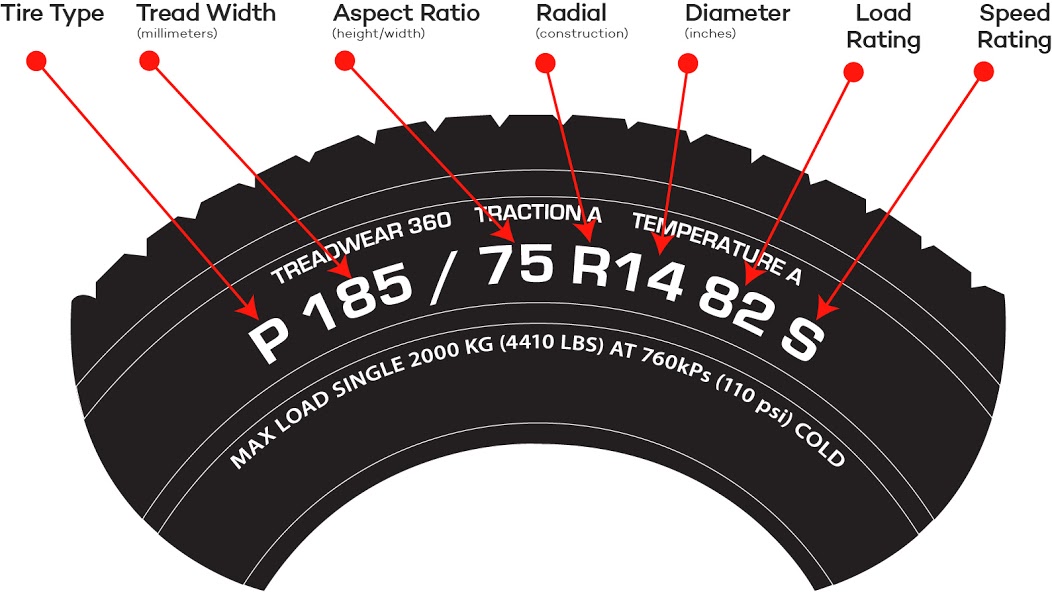 These tires are selected by the vehicle manufacturer to meet the load capacity of the vehicle and so an equivalent replacement tire of the same size, load capacity and speed rating is of course appropriate. However, in some cases it may be desirable to switch from a P-Metric or Euro-Metric to an LT-Metric or Flotation size tire. Some of the benefits to switching to an LT tire can include:
These tires are selected by the vehicle manufacturer to meet the load capacity of the vehicle and so an equivalent replacement tire of the same size, load capacity and speed rating is of course appropriate. However, in some cases it may be desirable to switch from a P-Metric or Euro-Metric to an LT-Metric or Flotation size tire. Some of the benefits to switching to an LT tire can include:
Notice that none of the benefits include increased load capacity. That is because no matter what tire you put on your truck, the vehicle itself has a load capacity that should not be exceeded.
There are some important points to consider before deciding to switch your pickup or SUV from P-Metric or Euro-Metric to an LT type tire (LT-Metric or Flotation).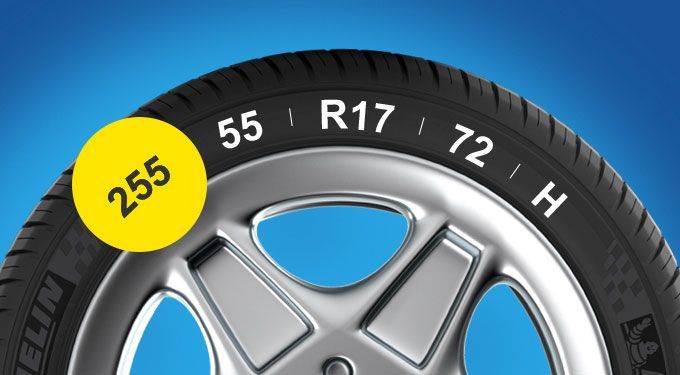
To determine the proper inflation pressure of LT tires on your vehicle use the following procedure:

Replacing LT-Metric/Euro-Metric Commercial (C-Type)
If your truck or SUV is ¾ or 1 ton capacity then it likely came from the factory with LT type tires. OE LT tires should never be replaced with passenger type tires, they do not have enough load capacity and are not designed to have the same load handling characteristics that your vehicle was intended for.
Also of consideration, if your vehicle has dual rear wheels, LT-Metric or C-Type tires should not be replaced with Flotation tires even if they are of equivalent physical size. Flotation tires are not intended for dual application and do not have dual load index stamping.
Trucks and SUVs tend to have a higher center of gravity than passenger cars. Ground clearance is important for trucks being driven off-road, and the only way to add clearance under the axles is to install taller tires. Designing the truck around taller tires results in a tall vehicle package and a higher center of gravity (with more body roll and load transfer), making the tires work harder, especially under braking and cornering situations and can make the vehicle less stable.
Learn about our mission, our achievements, and our ongoing commitments
Read Our Origin Story
Calculate
| ||||||||||||||||||||||||||||||||||||||||||||||||||||||||||
When factory tires wear out or you just want to put on other wheels, the question arises: what tire sizes will fit my car? The fact is that each car is designed for a certain wheel diameter and tread width. Usually, this information is contained on the back of the gas tank cap or in the operating documents. If you deviate from these sizes by more than 2-3 percent, then gas mileage will increase, the speedometer will begin to lie, and in case of a large difference, driving can become simply dangerous. nine0011
Usually, this information is contained on the back of the gas tank cap or in the operating documents. If you deviate from these sizes by more than 2-3 percent, then gas mileage will increase, the speedometer will begin to lie, and in case of a large difference, driving can become simply dangerous. nine0011
But how to choose the right size tires if there are some incomprehensible numbers written on the profile? Do not measure them with a ruler, by God. It is for these purposes that this tire calculator was created. It allows you to determine the difference between tires in centimeters, inches and percentages. In particular, with the tire calculator you can calculate and compare tire diameter, tread width, profile height and circumference. Additionally, the calculator detects potential differences in speedometer readings, ground clearance changes, and differences in revolutions per kilometer (or mile). nine0011
Calculator displays visual differences in tire diameter, profile, clearance and width. On the right side, a dynamic wheel pattern is generated, with a dotted pattern and parameters. At the top is a visual representation of the old tire (original size), and at the bottom is your potential new tire. The picture is displayed in two projections: lateral and frontal. Both can be downloaded to a computer in png format. To do this, right-click on the image and select "Save As...". nine0011
On the right side, a dynamic wheel pattern is generated, with a dotted pattern and parameters. At the top is a visual representation of the old tire (original size), and at the bottom is your potential new tire. The picture is displayed in two projections: lateral and frontal. Both can be downloaded to a computer in png format. To do this, right-click on the image and select "Save As...". nine0011
Using the virtual tire calculator is very easy. There are drop-down boxes in the upper left corner of the application. In the top row, you need to select the size of your original factory tire (or just the tires that are on your car at the moment). You can simply look at these indicators on the tire profile (side surface). The first field is the tire width in millimeters. The second field is the ratio of the profile height to the tire width in percent. The third field is the disc diameter in inches. nine0011
In the second row, you need to enter the size of the new tires, i. e. those tires that you are going to buy or have already bought. After that, click on the green "Calculate" button. The tire calculator will instantly calculate the differences between tires and display them in a table. Namely: diameter, width, circumference and height of the tire profile, the number of revolutions per kilometer and changes in ground clearance. The first two columns of the table will display the parameters of old and new tires, and the third column will show the nominal and percentage difference between them. Our recommendation will be displayed at the very bottom of the table. If the difference in diameters exceeds 3%, then we strongly do not recommend installing such tires, as this can be dangerous. nine0011
e. those tires that you are going to buy or have already bought. After that, click on the green "Calculate" button. The tire calculator will instantly calculate the differences between tires and display them in a table. Namely: diameter, width, circumference and height of the tire profile, the number of revolutions per kilometer and changes in ground clearance. The first two columns of the table will display the parameters of old and new tires, and the third column will show the nominal and percentage difference between them. Our recommendation will be displayed at the very bottom of the table. If the difference in diameters exceeds 3%, then we strongly do not recommend installing such tires, as this can be dangerous. nine0011
At the very bottom, you can see two speedometers that show the difference between the displayed and actual speed when changing tires. You can enter other values in the left speedometer using the arrows or directly from the keyboard. Changes will instantly be displayed on the right. By default, the difference is calculated at a speed of 60 kilometers per hour.
By default, the difference is calculated at a speed of 60 kilometers per hour.
If you need to calculate in inches , then simply click on the inscription "Inches" in the switch, which is located under the green button. nine0011